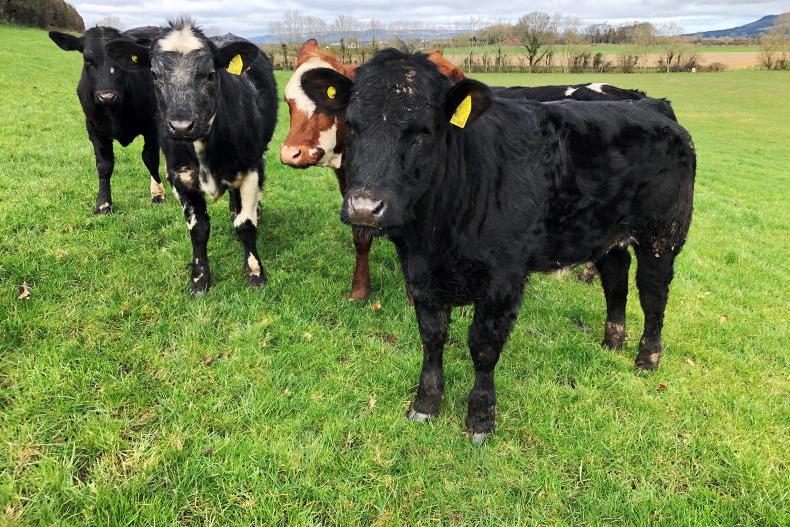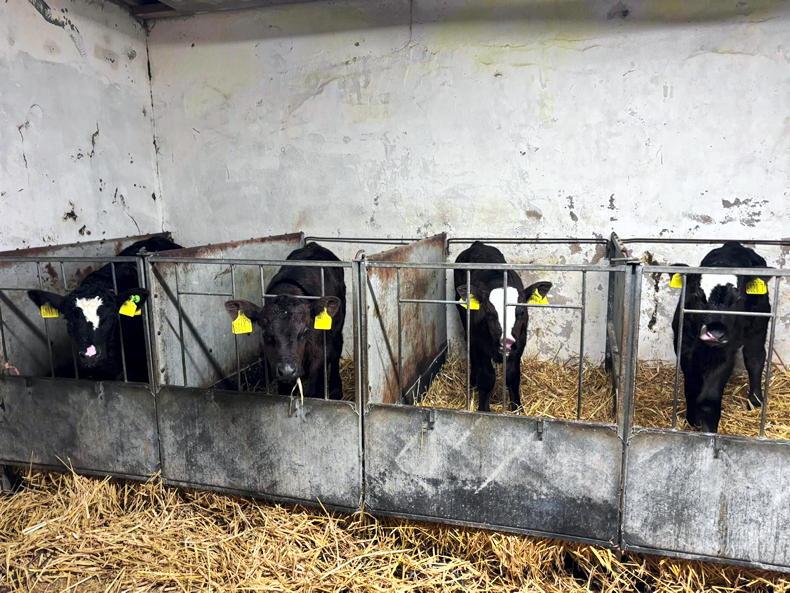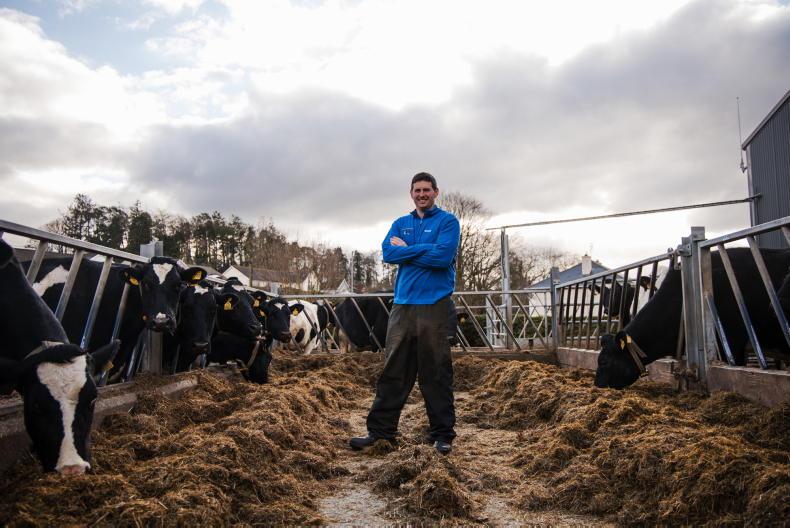Ground conditions are good in the southern half of Ireland, leading many farmers to think about potentially turning cattle out to grass later this month.
Of course, a lot can happen before then in terms of weather.
The availability of grass is another huge factor to keep in mind.
Outlined are five tips to getting cattle back to grass.
1. Walk the farm weekly
Start walking the farm every week to get a handle on how ground is shaping up, whether fertiliser is required and how much grass is available for grazing.
Walking the farm will also help gauge when cattle can start slipping out to grass and how many land can carry.
Continue walking the farm after turnout. Keep an eye on regrowth and signs of poaching.
2. Targeting fields for turnout
When walking the farm, try to plan out the first rotation. The obvious option is to pick a block of drier fields that allow animals to rotate around. But this is not always possible.
Some farmers will have grazed drier fields with sheep over winter, leaving these paddocks with no grass going into spring.
If possible, target silage ground for grazing in March, leaving a clean sward base for slurry and fertiliser before closing off for first cut.
Ideally, choose fields with shelter and multiple water points. Cattle can cause severe poaching travelling back and forward to a single water trough.
Finally, choose paddocks relatively close to a handling pen. If rehousing is required or young stock need treating for pneumonia, then cattle are easier to gather off grass.
3. Which cattle to turn out?
There are various cattle groups to give priority at turnout. It just depends on the farm.
Some farmers like putting autumn calves out during the day, then rehouse at night while their dams stay housed.
Other farmers prefer to turn out maiden heifers that will go to the bull in summer to boost liveweight gain.
Light weanlings that will finish next winter are also an option. Cutting meal from these animals three to four weeks before turnout improves performance at grass.
Finally, some farmers target first-calving heifers for spring turnout, followed by thin cows in need of an energy boost.
4. Start small and build numbers
Spring turnout does not mean opening the shed door and letting everything out on the same day. Start small and build numbers as ground conditions improve and grass supply increases.
5. Fertiliser
Getting fertiliser applied in advance of grazing will boost grass growth.
Target slurry to paddocks with low covers, as they are unlikely to be grazed until the end of the first rotation. This gives more time to get slurry washed in and improve grass utilisation.
Just be mindful of application rates, as a heavy coat of slurry can delay grazing.
Also, be wary of spreading slurry on paddocks where lactating cows will graze as the risk of tetany increases. The same goes with high potash (K) fertilisers.
Fields with medium covers can get chemical fertiliser before grazing. However, graze off paddocks with heavy covers before applying any fertiliser in spring.
Read more
Weanling trade on fire as records broken
New TAMS list provokes slurry controversy
Ground conditions are good in the southern half of Ireland, leading many farmers to think about potentially turning cattle out to grass later this month.
Of course, a lot can happen before then in terms of weather.
The availability of grass is another huge factor to keep in mind.
Outlined are five tips to getting cattle back to grass.
1. Walk the farm weekly
Start walking the farm every week to get a handle on how ground is shaping up, whether fertiliser is required and how much grass is available for grazing.
Walking the farm will also help gauge when cattle can start slipping out to grass and how many land can carry.
Continue walking the farm after turnout. Keep an eye on regrowth and signs of poaching.
2. Targeting fields for turnout
When walking the farm, try to plan out the first rotation. The obvious option is to pick a block of drier fields that allow animals to rotate around. But this is not always possible.
Some farmers will have grazed drier fields with sheep over winter, leaving these paddocks with no grass going into spring.
If possible, target silage ground for grazing in March, leaving a clean sward base for slurry and fertiliser before closing off for first cut.
Ideally, choose fields with shelter and multiple water points. Cattle can cause severe poaching travelling back and forward to a single water trough.
Finally, choose paddocks relatively close to a handling pen. If rehousing is required or young stock need treating for pneumonia, then cattle are easier to gather off grass.
3. Which cattle to turn out?
There are various cattle groups to give priority at turnout. It just depends on the farm.
Some farmers like putting autumn calves out during the day, then rehouse at night while their dams stay housed.
Other farmers prefer to turn out maiden heifers that will go to the bull in summer to boost liveweight gain.
Light weanlings that will finish next winter are also an option. Cutting meal from these animals three to four weeks before turnout improves performance at grass.
Finally, some farmers target first-calving heifers for spring turnout, followed by thin cows in need of an energy boost.
4. Start small and build numbers
Spring turnout does not mean opening the shed door and letting everything out on the same day. Start small and build numbers as ground conditions improve and grass supply increases.
5. Fertiliser
Getting fertiliser applied in advance of grazing will boost grass growth.
Target slurry to paddocks with low covers, as they are unlikely to be grazed until the end of the first rotation. This gives more time to get slurry washed in and improve grass utilisation.
Just be mindful of application rates, as a heavy coat of slurry can delay grazing.
Also, be wary of spreading slurry on paddocks where lactating cows will graze as the risk of tetany increases. The same goes with high potash (K) fertilisers.
Fields with medium covers can get chemical fertiliser before grazing. However, graze off paddocks with heavy covers before applying any fertiliser in spring.
Read more
Weanling trade on fire as records broken
New TAMS list provokes slurry controversy










SHARING OPTIONS